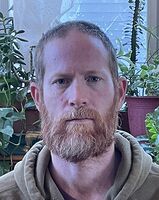Difference between revisions of "Manheim, J."
| (4 intermediate revisions by 2 users not shown) | |||
| Line 1: | Line 1: | ||
{{Person | {{Person | ||
| + | |affiliation=University of Wisconsin-Madison | ||
| + | |affiliationsecondary=Institute of Buddhist Dialectics | ||
| + | |phduniversity=University of Wisconsin-Madison | ||
| + | |education=2000-Bard College at Simon's Rock, Great Barrington, MA | ||
| + | 2002-BA, University of Wisconsin-Madison | ||
| + | 2006-MA, Harvard Divinity School | ||
| + | 2014-Master of Prajnaparamita Studies, Institute of Buddhist Dialectics, India | ||
| + | 2017-2024-Ph.D., University of Wisconsin-Madison | ||
| + | |StudentOf=Dunne, J. | ||
| + | |MainNamePhon=Jeremy Manheim | ||
| + | |SortName=Manheim, Jeremy | ||
| + | |namefirst=Jeremy | ||
| + | |namelast=Manheim | ||
| + | |PersonType=Authors of English Works; Translators | ||
| + | |bio=Before starting his PhD at UW Madison in 2017 under John Dunne, Jeremy spent nine years studying at the Institute of Buddhist Dialectics in Dharamsala, India. Before that, he completed a masters of theological studies at Harvard Divinity school. He says: "After spending nine years in a Tibetan monastic college in India, I came to UW-Madison to focus on analytic philosophy. Moving between these frameworks forced me to rethink which aspects of Buddhist philosophy required what sort of arguments. These questions eventually led to my dissertation research on Buddhist soteriological concepts. Recently, there has been considerable interest in presenting a scientifically credible “Buddhism 2.0”—an idea which hinges on naturalizing nirvāṇa into a psychological state. The question of whether this makes sense is the entry point for my analysis of Buddhist arguments about nirvāṇa, from Vasubandhu and Candrakīrti to Sakya reflections on the unity of saṃsāra and nirvāṇa." (Jeremy Manheim. Personal Communication. February 3, 2023.) | ||
| + | |images=File:Manheim-Jeremi-Official-reduced.jpg | ||
| + | File:Manheim Jeremy UW-Madison.jpg | ||
|HasDrlPage=Yes | |HasDrlPage=Yes | ||
|HasLibPage=Yes | |HasLibPage=Yes | ||
|HasBnwPage=Yes | |HasBnwPage=Yes | ||
|pagename=Manheim, J. | |pagename=Manheim, J. | ||
| − | |||
| − | |||
| − | |||
|namemiddle=S. | |namemiddle=S. | ||
| − | |||
|email=jsmanheim@wisc.edu | |email=jsmanheim@wisc.edu | ||
| + | |publications=* Is Consciousness a Person? A Study in the Tarkajvālā. ''Indian International Journal of Buddhist Studies'', Vol. 18 (2017). | ||
| + | * The Wheel-Weapon: An Analysis of Lojong Reading. ''Journal of Theta Alpha Kappa'', Vol. 26, No. 1 (2002). | ||
| + | |languagetranslation=Tibetan | ||
| + | |languagetarget=English | ||
|IsInGyatsa=No | |IsInGyatsa=No | ||
|classification=People | |classification=People | ||
Latest revision as of 12:30, 3 February 2023
| English Phonetics | Jeremy Manheim |
|---|---|
| Sort Name | Manheim, Jeremy |
Tibetan calendar dates
| Translates from: | Tibetan |
|---|---|
| Translates to: | English |
- Primary Affiliation (Workplace)
- University of Wisconsin-Madison
- Secondary Affiliation
- Institute of Buddhist Dialectics
- Teachers
- Dunne, J.
PhD University
- University of Wisconsin-Madison
Education
2000-Bard College at Simon's Rock, Great Barrington, MA
2002-BA, University of Wisconsin-Madison
2006-MA, Harvard Divinity School
2014-Master of Prajnaparamita Studies, Institute of Buddhist Dialectics, India
2017-2024-Ph.D., University of Wisconsin-Madison
Biographical Information
Before starting his PhD at UW Madison in 2017 under John Dunne, Jeremy spent nine years studying at the Institute of Buddhist Dialectics in Dharamsala, India. Before that, he completed a masters of theological studies at Harvard Divinity school. He says: "After spending nine years in a Tibetan monastic college in India, I came to UW-Madison to focus on analytic philosophy. Moving between these frameworks forced me to rethink which aspects of Buddhist philosophy required what sort of arguments. These questions eventually led to my dissertation research on Buddhist soteriological concepts. Recently, there has been considerable interest in presenting a scientifically credible “Buddhism 2.0”—an idea which hinges on naturalizing nirvāṇa into a psychological state. The question of whether this makes sense is the entry point for my analysis of Buddhist arguments about nirvāṇa, from Vasubandhu and Candrakīrti to Sakya reflections on the unity of saṃsāra and nirvāṇa." (Jeremy Manheim. Personal Communication. February 3, 2023.)
Publications
- Is Consciousness a Person? A Study in the Tarkajvālā. Indian International Journal of Buddhist Studies, Vol. 18 (2017).
- The Wheel-Weapon: An Analysis of Lojong Reading. Journal of Theta Alpha Kappa, Vol. 26, No. 1 (2002).
- Wiki Pages
- Person description or short bio
Expand to see this person's philosophical positions on Buddha-nature.
| Is Buddha-nature considered definitive or provisional? | |
|---|---|
| Position: | |
| Notes: | |
| All beings have Buddha-nature | |
| Position: | |
| If "Qualified", explain: | |
| Notes: | |
| Which Wheel Turning | |
| Position: | |
| Notes: | |
| Yogācāra vs Madhyamaka | |
| Position: | |
| Notes: | |
| Zhentong vs Rangtong | |
| Position: | |
| Notes: | |
| Promotes how many vehicles? | |
| Position: | |
| Notes: | |
| Analytic vs Meditative Tradition | |
| Position: | |
| Notes: | |
| What is Buddha-nature? | |
| Position: | |
| Notes: | |
| Svātantrika (རང་རྒྱུད་) vs Prāsaṅgika (ཐལ་འགྱུར་པ་) | |
| Position: | |
| Notes: | |
| Causal nature of the vajrapāda | |
| Position: | |

